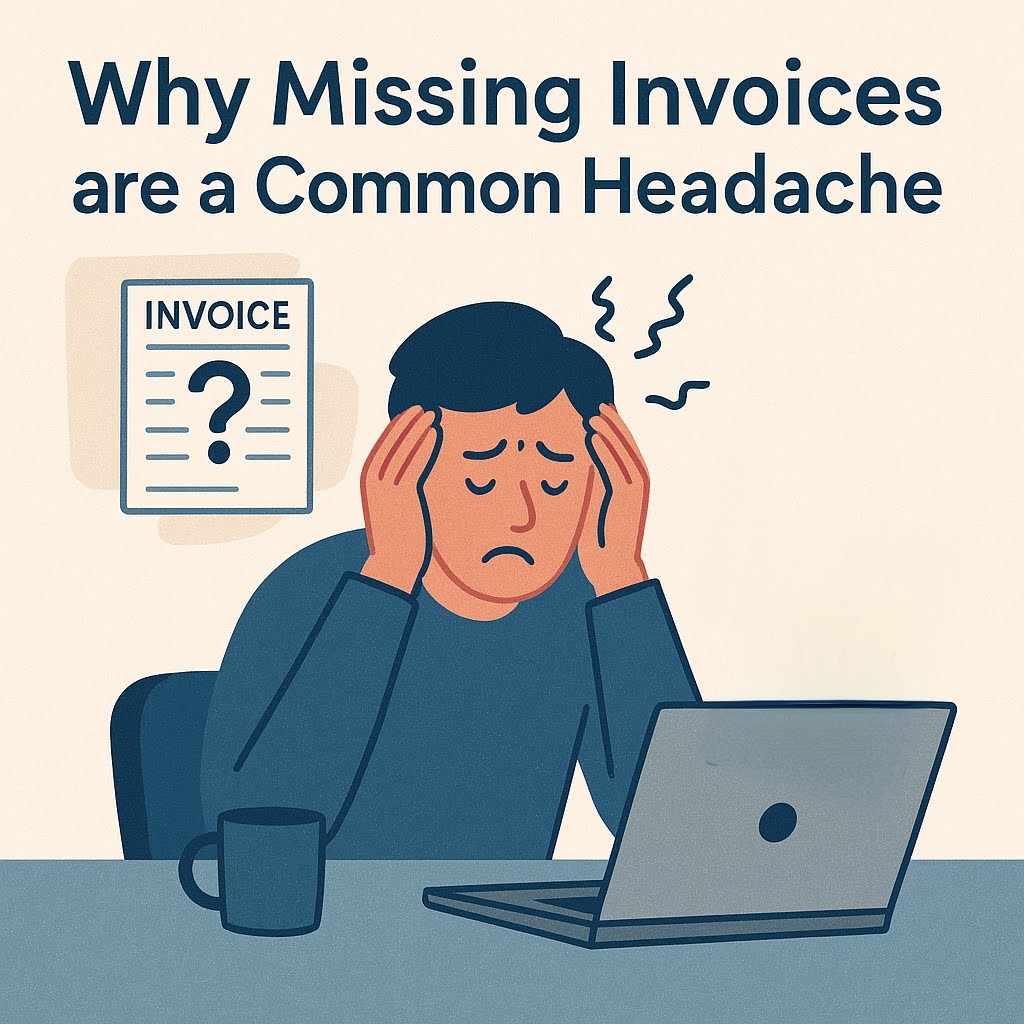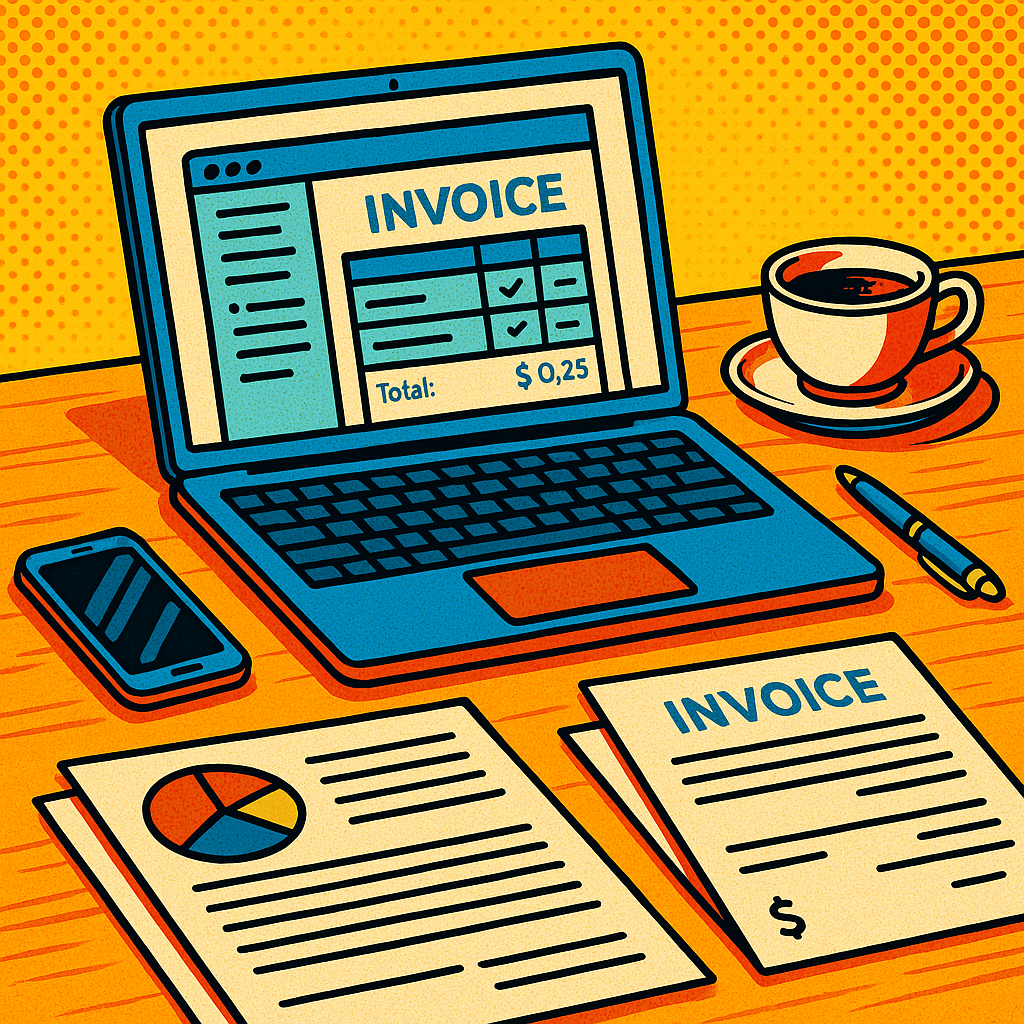Mastering the Art of Invoice Templates: Your Key to Streamlining Business Payments
Ever found yourself stuck in the inevitability of paperwork, wondering if there’s a more efficient way to keep your business’s finances in check? You’re not alone. For many entrepreneurs, invoicing resembles a never-ending game of whack-a-mole—just when you think you’ve got it under control, another issue pops up. But here’s where a robust invoice template can become your best ally. It’s not just a piece of paper with numbers, but a silent partner in your business operations.

Consider the chaos of ad-hoc invoicing—different formats, missing essential details, and potentially delayed payments because someone forgot to include their banking information. Sounds familiar? Well, that’s exactly where standardized invoice templates come in, offering a seamless way to simplify this taxing (pun intended!) process. It’s about transforming what often seems like a chore into a fluid part of your company’s workflow.
Most small business owners know the dread of realizing a payment is late because of an invoicing error. Sometimes, the issue isn’t that you forgot to send an invoice—it’s that the document was chaotic and ineffective. Tackling these issues head-on is where a well-crafted invoice template shines.
Furthermore, with tools like InvoiceGenie, creating missing invoices from providers becomes a breeze—not to mention the added assurance of tax compliance and accounting simplification. As we dive deeper into this topic, think of invoice templates as the secret weapon against unnecessary financial headaches. Just imagine how much smoother your operations could be with fewer chasing acts for missing documentation and more time focusing on growing your business. Sometimes, it’s the seemingly small changes that drive big transformations.
Why Invoice Templates Matter in Business
When talking about efficient business management, invoice templates often emerge as unsung heroes. Remember the last meeting where we brainstormed solutions to invoicing nightmares? Ah, the trials of invoices going haywire was a central topic. The truth is, standardized templates provide a reliable foil against chaos in financial documentation. And really, who doesn’t want fewer headaches?
Let’s be honest, customization is king. A generic invoice template can nip certain issues in the bud right before they escalate. I recall that conversation we had during last year’s conference about the importance of personalization in client communications. Just like customized experiences win customer loyalty, tailored invoice templates enhance clarity and effectiveness. This is particularly true in sectors where detail is everything—a custom template ensures no component is left out, and payments are processed seamlessly.
Now, reflecting on the latest business trends, the push towards automation is undeniable. Digital invoice solutions have seen exponential growth, echoing what we discussed in that tech innovation summit. Companies are leaning into software not just for convenience, but for strategic advantages. Using a tool like Software as a Service (SaaS) can streamline the creation and management of your invoice templates, offering a facade of professionalism and organization all from a digital dashboard.
Furthermore, adopting these digital solutions like InvoiceGenie can mitigate common mistakes and even eliminate repetitive tasks. Think back to the times we scrambled to fix errors that a simple automated check could have caught! As we know well, time is not an infinite resource; why not allocate it to critical business strategies rather than clerical corrections? Invoice templates are not just a necessity, they are quintessential—a stepping stone to that coveted business efficiency we’ve always chased.
Navigating Common Invoice Template Challenges
Now, you might be thinking, “Sure, invoice templates sound great, but aren’t they just another layer of complexity?” It’s a valid point—there’s a natural skepticism about introducing new processes. After all, the age-old tradition of manually handling invoices has worked—albeit not perfectly—for decades. However, it’s worth considering how this traditional method doesn’t scale well in today’s fast-paced business environment.
Let’s face it—errors happen. Even the best invoice templates can fall victim to human mistakes if not used correctly. Ever sent out an invoice only to realize the overdue amount was off by a decimal? These slip-ups might seem trivial, but even minor inaccuracies can lead to payment delays or impact your business’s reputation. But here’s the thing: with the right checks and balances, such as periodic reviews and updates to align with evolving financial guidelines, these templates can become more resilient against error.
Another challenge is resistance from the team. “Do we really need another system to learn?” Well, yes and no. Implementing any new tool requires a learning curve, but the long-term gains in efficiency and accuracy are well worth it. Plus, most advanced digital tools are designed to be intuitive, minimizing the time needed for your team to adapt. Remember the excitement at that workshop when we discovered how easily trends shift toward enhancing usability in tech tools?
The critical part is introducing these templates with thorough training and support. Engage your team in the process, showing them how this change can alleviate their workload rather than add to it. That way, everyone is not only on board but also more likely to leverage these tools to their fullest potential. Ultimately, overcoming these hurdles reinforces your business structure, making invoicing as streamlined and error-free as possible.
Elevating Your Business with the Right Invoice Template
As we circle back to our starting premise, it’s clear that invoice templates truly are the unsung heroes in the business world—a title well-deserved given their potential to transform inefficiencies into streamlined processes. Remember how we questioned if there’s a more efficient way to handle business payments? Well, here we’ve charted the path: through thoughtful, tailored, and digitally-integrated invoice templates.
We’ve unpacked the many ways these templates can save time, mitigate errors, and ultimately enhance your business’s operational identity. Given the complexities of modern-day financial transactions, having a system that standardizes and professionalizes these exchanges cannot be underestimated. Just as we polished the concept of strategic foresight in that brainstorming session, the nuanced nature of managing invoicing this way feels like setting sails to catch only favorable winds.
What’s more, addressing challenges like user resistance and human errors is crucial. We’ve all faced these hurdles, and yet, it is by welcoming technological strides and coupling them with solid training that an organization can truly flourish. Remembering how adaptable and resourceful we’ve been through various changes can be a guide as you consider integrating these practices within your own workflows.
So, where does that leave us? Envision transforming the mundane task of invoicing into a strategic advantage. As you ponder this, maybe over your next coffee break, consider how these insights resonate within your current operations. How might they shift your perspective? With the right tools like InvoiceGenie, you’re not just keeping up with the industry; you’re setting a pace that’s hard to beat. After all, isn’t it time we put those invoices to work for us, rather than the other way around?
FAQs: Mastering the Art of Invoice Templates
1. What are the key components of an invoice template discussed in the article?
In the article “Mastering the Art of Invoice Templates: Your Key to Streamlining Business Payments,” we highlight essential components such as a detailed header, an itemized list of services or products, precise total calculations, and clear payment terms. Customization and branding elements are also crucial, ensuring that invoices resonate with clients and foster professional communication.
2. How can invoice templates improve business efficiency?
Invoice templates streamline processes by standardizing the format of invoices, reducing errors, and enhancing professionalism in business transactions. The section “Streamlining Processes with Invoice Templates” in the article illustrates how they can simplify documentation and free up time for more strategic tasks.
3. What challenges might businesses face when implementing invoice templates?
The article’s “Navigating Common Invoice Template Challenges” section acknowledges potential hurdles such as resistance from staff and occasional human errors in data entry. However, by providing thorough training and leveraging intuitive digital tools, businesses can overcome these challenges and fully benefit from the use of invoice templates.
4. Are there specific tools recommended for creating and managing invoice templates?
Yes, the article recommends digital solutions for managing and creating invoice templates. Tools like InvoiceGenie are highlighted as efficient platforms to ensure accuracy and streamline the process of handling invoices.
5. Why is personalization important in invoice templates?
Personalization is crucial as it enhances clarity and relevance to the specific client or transaction, discussed in the “Customization Tips for Your Invoice Template” section. Tailored invoices can help build stronger client relationships by conveying professionalism and attention to detail.

